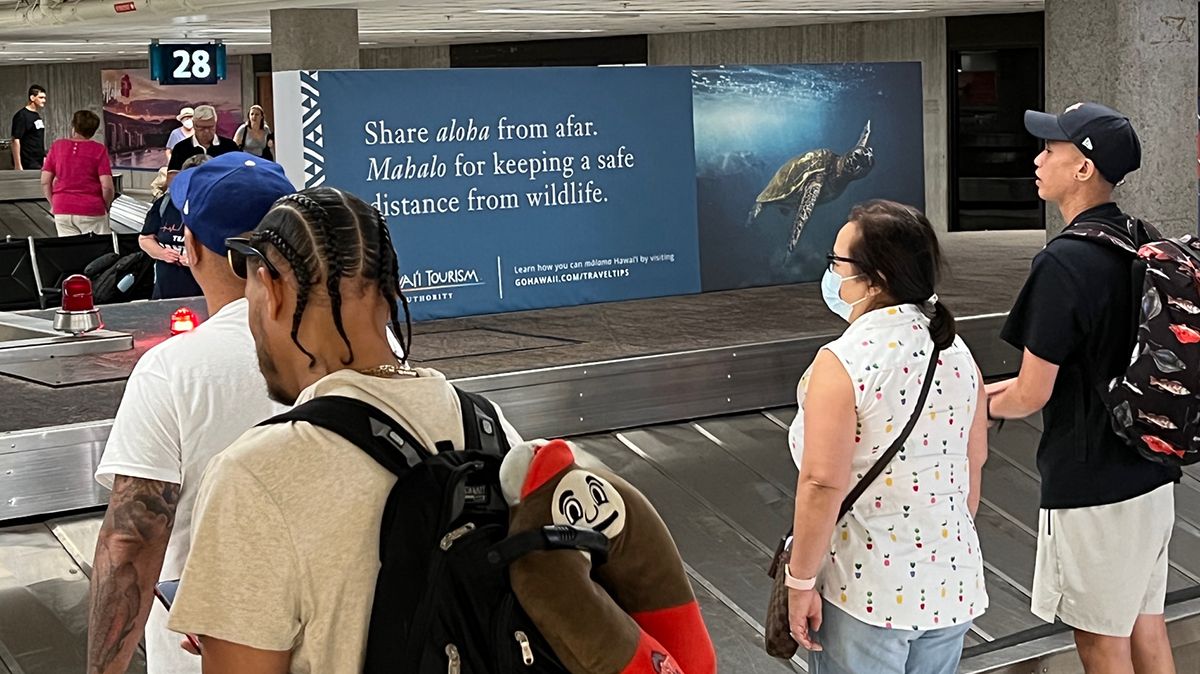HONOLULU — Travelers to Hawaii are already being greeted by displays aimed at educating visitors about the concept of “malama” and how to travel “pono.”
It’s part of the Hawaii Tourism Authority’s community-based Destination Management Action Plans and effort to stay connected with visitors throughout their journey — from planning to transit to arrival and throughout their stay.
Safety messages and educational videos greet visitors upon arrival at the airport. HTA, in partnership with Hawaii Tourism USA, the Department of Transportation-Airports Division and other agencies, have put up displays in baggage claim and public areas of Daniel K. Inouye International Airport on Oahu, Lihue Airport on Kauai, Kahului Airport on Maui, and Ellison Onizuka Kona International Airport at Keahole and Hilo International Airport on Hawaii Island.
“Ahead of the traditionally peak summer travel season, we are doing everything we can to communicate the right message to our visitors so that they can gain a better understanding of who we are as a people and place, and the responsibility we share in caring for our home,” said HTA Chief Brand Officer Kalani Ka‘anā‘anā, in a news release. “With consistent information presented to them frequently through various media platforms, over time we hope to see a shift in how travelers engage with our communities and home. We want them to leave this place better than when they arrived.”
Kuleana Travel Tips is one tool being used to educate visitors. It’s a video series “delivered to visitors” over social media and other online platforms, covering topics such as marine life protection, culture, land safety, ocean health, ocean safety and “astute renting.”
This form of outreach allows HTA to use geotargeting technology to target zip codes with above-average composition of visitors, as well as geofencing that identifies mobile devices within designated visitor hot spots on each island, according to Ka‘anā‘anā. “Therefore, we can continue to share our pono travel messaging with the right people at the right time.”
Visitors who use the Waze map app will also see the messaging.
HTA’s airline partners are featuring the agency’s “Malama Hawaii” videos on inbound flights to Hawaii. Larger hotel properties and a handful of activity partners are also sharing videos with guests pre- and post-arrival.
The purpose of each island’s DMAP is to “rebuild, redefine and reset the direction of tourism on their respective islands with regenerative tourism at the core which aims to enhance the residents’ quality of life and improve the visitor experience.” The project was led by HTA, HTUSA and island chapters and developed by residents of each island in partnership with the respective county and tourism leaders.
The recent implementation of reservations required to visit Diamond Head State Monument by the Department of Land and Natural Resources was one of the top priorities voiced by the community in the Oahu DMAP. It follows suit with reservation systems in place for Hanauma Bay Nature Preserve on Oahu, Haena State Park on Kauai and Haleakala National Park and Waianapanapa State Park on Maui.
Sarah Yamanaka is a digital journalist for Spectrum News Hawaii. Read more of her stories here.




